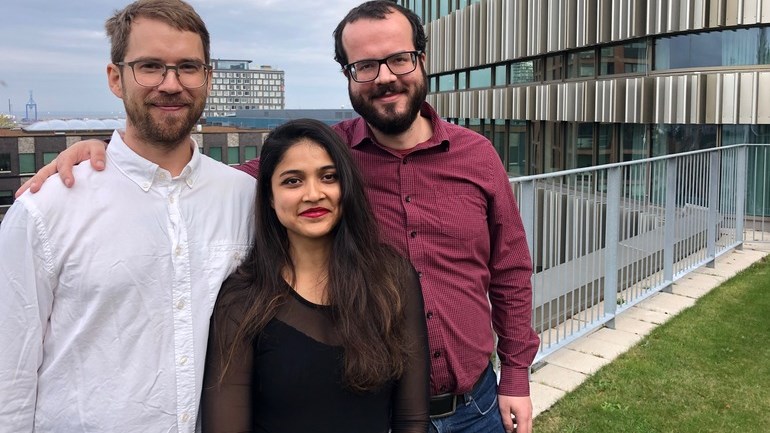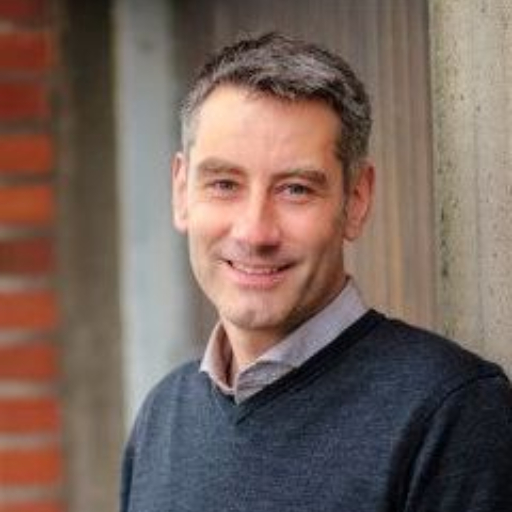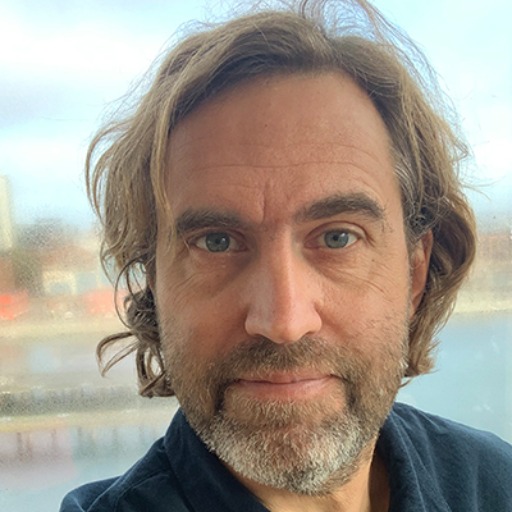Important step for research in applied physics

Mattias Tidefelt, Shilpa Bijavara Seshashayana and Grzegorz Sadowski are Malmö University's first licentiates in the research field of applied physics. Photo: Magnus Erlandsson
This autumn, three doctoral students have defended their licentiate thesis in the subject of applied physics at Malmö University. A milestone for this research field, according to Henrik Hartman, who is responsible for the doctoral programme in applied physics at the Department of Materials Science and Applied Mathematics.
“This is great news for the University, applied physics was established three years ago and now we have ten PhD students, with three more starting next year. The fact that the first three doctoral students have now obtained their licentiates, and with good grades from the external reviewers, is very gratifying and reinforces the assessment of internationally high quality in research that we have previously received,” says Hartman.
The three doctoral students are Shilpa Bijavara Seshashayana, Mattias Tidefelt and Grzegorz Sadowski.
“My research focuses on the development of glass alloys, which are obtained via rapid cooling of a metallic melt to a metastable solid. These materials exhibit impressive material properties which can be further refined by controlled distributions of nano-sized crystalline precipitates,” says Tidefelt.
Bijavara Seshashayana looked at the “fingerprints” of stars to understand how galaxies, including our own, change over time.
“By analysing the light from stars, I can work out what elements they contain. This helps us to see how stars create and spread elements like carbon and oxygen across space. Over billions of years, these elements shape the galaxy. My work reveals the story of how galaxies grow and evolve,” she says.
A better understanding and improving the properties of ‘of Mg3Bi2-based thin films’ is the aim of Grzegorz’s research. “Thermoelectric materials can be used to process part of the wasted heat into electricity. When applied in form of thin coatings, they can be useful in self-powered microdevices and localised cooling.”
Tidefelt started his studies at Malmö University with a technical foundation year nine years ago: “I wanted to see if the natural sciences were for me. I'm driven to develop, and in terms of knowledge, the possibilities here are endless. Combined with a fascination for advanced technology, this is an interesting way to spend my time,” he says.
Bijavara Seshashayana became a scientist because she was fascinated by the mysteries of the universe and the idea of discovering something new. “Research is fun because it's like solving a cosmic puzzle – each discovery opens doors to more questions and deeper understanding. It's exciting to find connections and know that my work can help answer big questions about existence.
Sadowski wanted to get a better understanding of materials science, especially when it comes to the production and characterisation of thin films. I like to learn more about things I am interested in, and there is always more to learn when it comes to science.”
More about applied physics at Malmö University
Applied physics brings together research in physics, materials science, astrophysics and includes calculations, modelling, experiments, and observations. Research at Malmö University takes place in an international environment and ranges from pure basic research to collaboration with companies and involves experiments in both our own laboratories and at international facilities.

